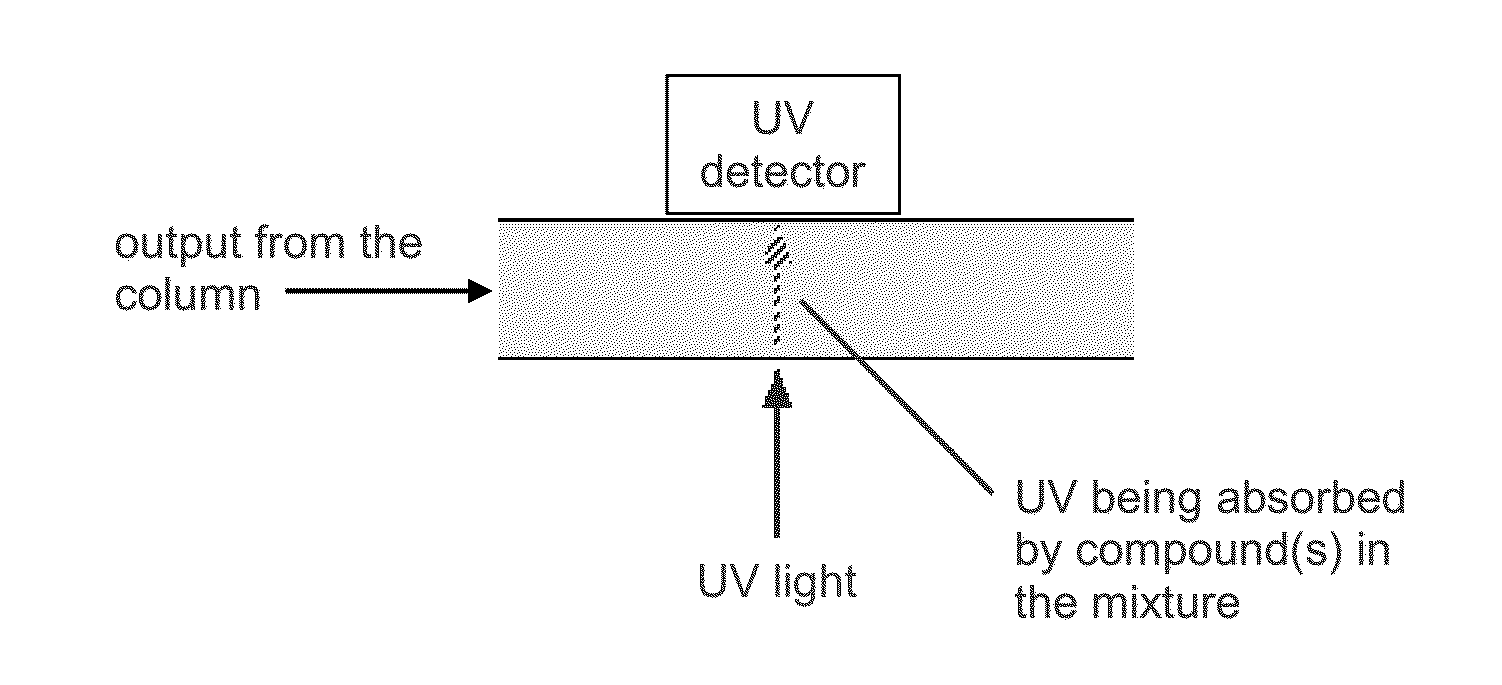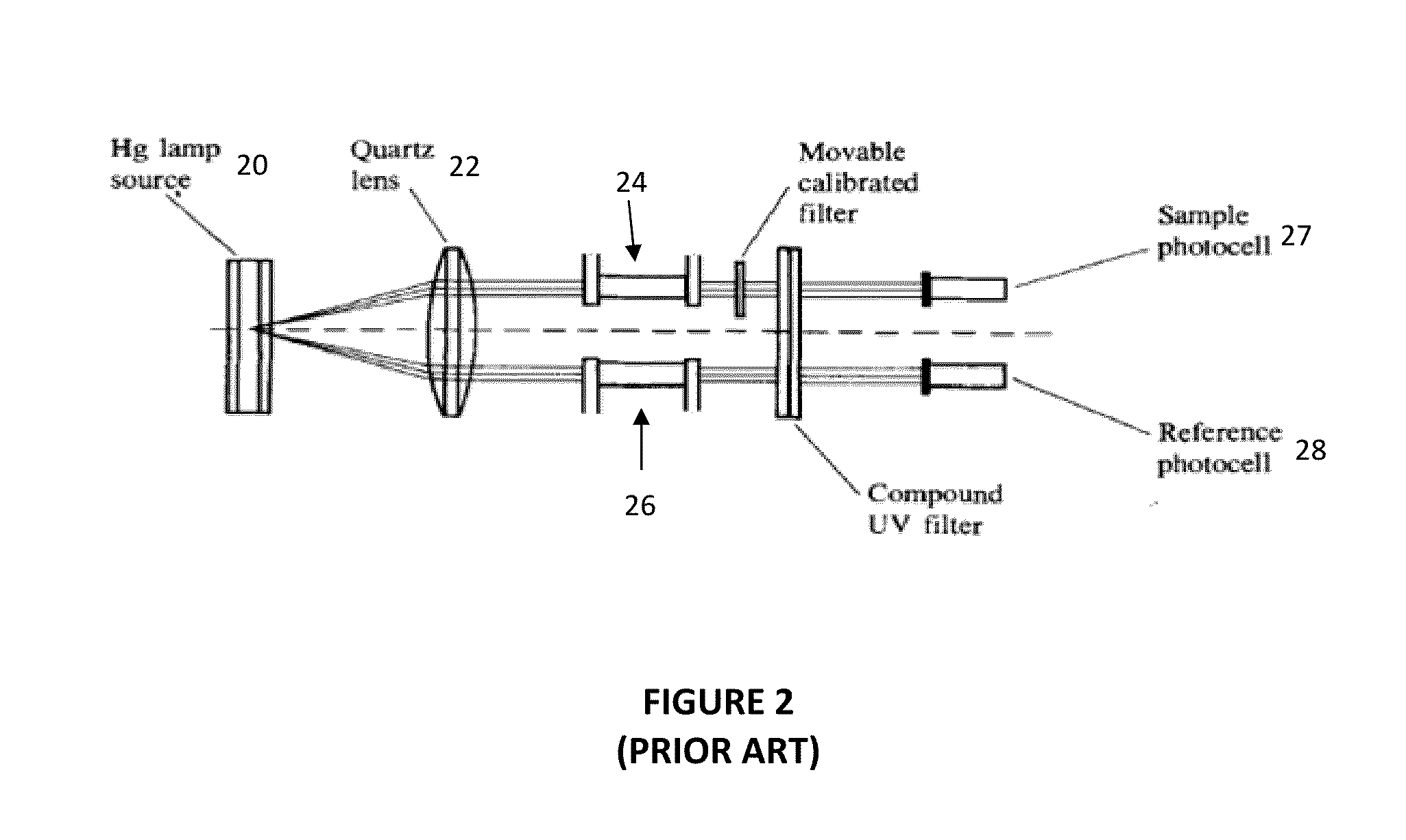Low-power miniature led-based UV absorption detector with low detection limits for capillary liquid chromatography
a technology of capillary liquid chromatography and detector limits, which is applied in the direction of photometry using electric radiation detectors, optical radiation measurement, instruments, etc., can solve the problems of unstable light output, long warm-up time, short lifespan, etc., and achieve low detection limits and power requirements. reduced
- Summary
- Abstract
- Description
- Claims
- Application Information
AI Technical Summary
Benefits of technology
Problems solved by technology
Method used
Image
Examples
Embodiment Construction
[0021]Reference will now be made to the drawings in which the various embodiments of the present invention will be given numerical designations and in which the embodiments will be discussed so as to enable one skilled in the art to make and use the invention. It is to be understood that the following description illustrates embodiments of the present invention, and should not be viewed as narrowing the claims which follow.
[0022]Before beginning, it should be understood that on-column detection may refer to when packed bed material terminates before the end of the column so that the last part of the column is actually empty. But there may also be situations in which the column has packed bed material all the way to the end of the column and a capillary has to be added in order to perform detection in the capillary portion. Accordingly, the embodiments of the invention should all be considered to include both configurations to be within the scope of all embodiments, where detection i...
PUM
| Property | Measurement | Unit |
|---|---|---|
| outer diameter | aaaaa | aaaaa |
| outer diameter | aaaaa | aaaaa |
| wavelength | aaaaa | aaaaa |
Abstract
Description
Claims
Application Information
 Login to View More
Login to View More - R&D
- Intellectual Property
- Life Sciences
- Materials
- Tech Scout
- Unparalleled Data Quality
- Higher Quality Content
- 60% Fewer Hallucinations
Browse by: Latest US Patents, China's latest patents, Technical Efficacy Thesaurus, Application Domain, Technology Topic, Popular Technical Reports.
© 2025 PatSnap. All rights reserved.Legal|Privacy policy|Modern Slavery Act Transparency Statement|Sitemap|About US| Contact US: help@patsnap.com



